You’ve heard about them in the news, you’ve seen them in the movies, and you might have read a book or two about them.
I’m, of course, talking about the US Navy’s elite counter-terrorist organization, commonly known as SEAL Team 6.
Otherwise known as DEVGRU… which is their official name.
So what does DEVGRU stand for?
DEVGRU stands for US Naval Special Warfare Development Group and is the tip of the spear when it comes to Navy Special Warfare. SEAL Team 6 was originally formed in 1980 by its founding officer, Commander Richard Marcinko. After SEAL Team 6 was disbanded in 1987, its name was officially changed to DEVGRU.
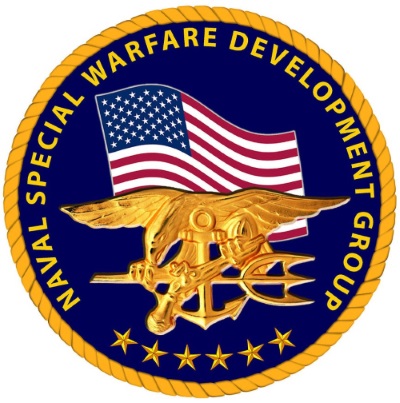
But what is it about this secretive organization that sparks the curiosity of millions worldwide?
Throughout this article, we’re going to discuss the history of DEVGRU, its selection process, training program, the various squadrons, and what it takes to become a DEVGRU member.
Jump To A Section
1. Brief History Of DEVGRU (SEAL Team 6)
Interestingly enough, DEVGRU got its start after a failed rescue mission by a completely different Tier 1 Unit: Delta Force.
In November of 1979, 52 American citizens were taken captive in Iran, resulting in what was known as the “Iran Hostage Crisis“.
At the time, the only Tier 1 unit was Delta Force, and they were tasked with rescuing the hostages.
Known as Operation Eagle Claw, Richard Marcinko was one of the 2 Navy liaisons that were part of the Terrorist Action Team.
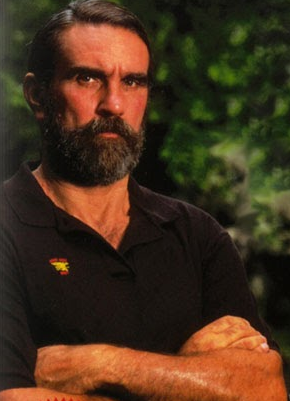
They watched in horror as the mission failed, and in the wake of the failure, the Navy decided they needed a dedicated maritime counter-terrorist team.
Thus, SEAL Team 6 was born.
It wasn’t until 1987 that SEAL Team 6 was officially disbanded, and DEVGRU was formed.
Related Article: 17 Famous Navy SEALs (and 3 Controversial Ones)
2. DEVGRU Selection
So how do you join DEVGRU?
In order to join SEAL Team 6, you have to meet the following basic criteria:
- Already be an active member of an SDV or SEAL Team
- Must have 5 years experience in a SEAL Team
- Be 21 years of age or older
- Have served at least 2 deployments
- Be eligible for a Secret-level clearance
- Have an enlisted rank of E-4 through E-8, or
- Be a commissioned officer of rank O-3 or O-4
If you meet all the criteria, the next step is to fill out a form called a special request chit. It is also known as form NAVPERS 1336/3.
Essentially, a special request chit is something you need to fill out in order to do anything.

Want to get a tattoo? Fill out a special request chit.
Need to move off base into a nearby apartment? Fill out a special request chit.
Want to take a dump? Fill out a special request chit. Kidding 🙂
The chit is submitted to your superior (* usually your leading petty officer ‘aka LPO’), and then it works its way up the chain of command.
Ultimately it lands on the Command Master Chiefs’ desk, who then consults with the Commanding Officer on whether or not you have a good chance at making it over at DEVGRU.
Assuming the chit is approved, you’re then given the thumbs up to screen as a potential SEAL Team 6 training candidate.
Related Article – Navy Tattoo Policy: What IS And What ISN’T Allowed
Initial Screening For DEVGRU
SEAL Team 6 conducts a few screenings every year, and there are several layers of screening that a potential candidate has to go through.
The very first screening is known as, unsurprisingly, the initial screening.
While I couldn’t find any details on the exact initial screening process, it does involve taking an amped-up version of the physical test that the usual SEALs have to pass.
The test involves things like:
- Pushups
- Planks
- Pull-Ups
- A timed run and swim
Again, while we don’t know the exact requirements, we can infer from the basic Navy SEAL PST Standards that the minimum scores are vastly higher.
If you pass the initial screening, you then move on to a review board.
This involves getting grilled by a board of senior officers and enlisted, where they ask you a variety of questions, including:
- Your tactics and experience
- Former bosses you might have had
- Any service medals you may have earned
- Your home and family life
- Your finances
- How much alcohol you drink
There will even be a guy checking to see if the service medals and awards you have on your chest match up to the paperwork, and are in the correct order of precedence.
They’re basically trying to get a rough picture of the type of person who’s applying to become among their ranks.
They’ll also ask you things like:
“Why do you want to join SEAL Team 6?”
“What do you bring to the table?”
“Do you honestly think you can handle it?”
There really is no “right” or “wrong” answer, but in the highly unlikely event you ever find yourself before a DEVGRU board, just answer honestly.
The initial screening process can take as little as a few months, to as much as a couple of years.
It really depends on the specific needs of DEVGRU and is a closely held secret.
Related Article – Navy PRT Standards For Males and Females
3. DEVGRU Green Team
It’s unknown how many active-duty SEALs try out for DEVGRU every year, but it’s thought to be in the hundreds.
The failure rate is reported to be around 50%, meaning that only half of those who try out for it actually make it through the training.
Assuming you pass the initial screening test, you may then be invited to train in the Operators Training Course.
Otherwise known as “Green Team.”
Green Team is an 8-month course designed to weed out the “normal SEALs” (if there even is such a thing) from the DEVGRU-worthy SEALs.
It’s essentially an amped-up training version of what SEALs already do, and is divided up into 3 phases:
Close Quarters Battle (CQB) Training
The first phase of DEVGRU Green Team training is known as Close Quarters Battle, or CQB.
CQB involves high-pressure shooting scenarios at extremely close distances, which is almost always conducted inside buildings (frequently referred to as ‘Kill Houses’)
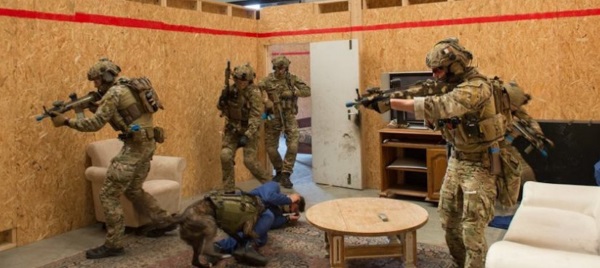
These ‘Kill Houses’ are usually constructed inside large warehouse-size buildings and can be converted into a wide variety of tactical setups.
CQB is employed used by several other combat jobs in the Navy, including VBSS teams.
Related Article: 5 Best Combat Jobs In The US Navy
This is considered by most the most difficult part of DEVGRU training, which we’ll get into in a minute.
As part of CQB training, you can expect to enter and “clear” rooms of bad guys using a variety of weaponry, including:
- HK 416
- M4A1 Carbine
- MK13 CQBR
- HK MP7
- Sig Sauer P226R
- HK45CT
Throughout their CQB training, it’s believed that they use a type of simulated ammunition that’s literally called “Simunition.”
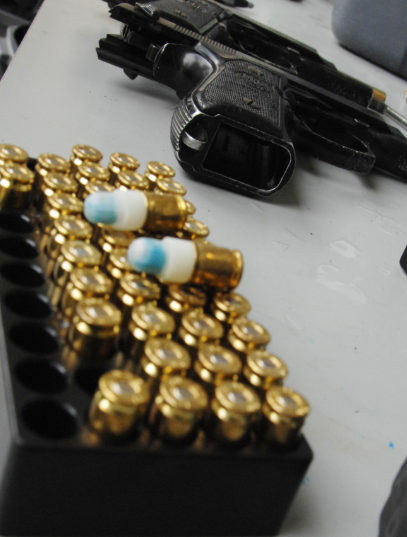
These are basically non-lethal, reduced-energy paint “bullets”, and are used for obvious safety reasons. (Reference: 1)
With that said, as they progress through training and various scenarios, they move on to shooting live rounds.
By this point in their career, most Navy SEALs have been trained in CQB thoroughly.
With that said, the CQB at Green Team is on a whole other level.
The speed at which CQB is conducted is way faster than what a ‘vanilla’ SEAL is accustomed to, which is what makes DEVGRU operators stand out.
Keep in mind that many of these scenarios are practiced in a pitch-black environment under night vision goggles.
Throughout their CQB training, various scenarios are presented to the candidate to test their reflexes and split-second decision-making skills.
Some of these “unexpected” things may include a situation like opening a door to clear a room and find a brick wall.

In his book “No Hero,” former DEVGRU operator Matt Bissonnette talks about a CQB training technique called “The Hooded Box.”
He details the shooting scenario, which involves literally standing in a small box in the center of a room with a hood on.
The candidate can stand there for several minutes waiting for the hood to be lifted off his head.
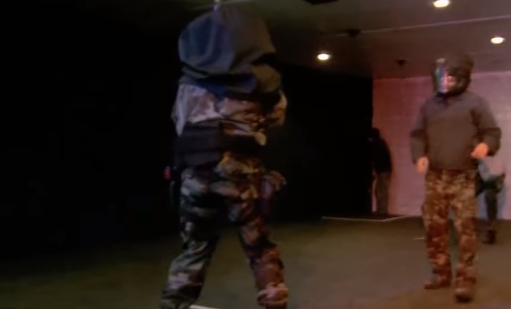
Keep in mind that, as a student, you could be standing there with a hood on your head for 5 seconds.
Or 20 minutes…(or longer).
The purpose behind this is that you literally have no idea when the scenario will be presented to you, which significantly amps up the pressure to perform.
Once the hood is finally pulled, the DEVGRU candidate is expected to respond to any scenario he is faced with.
That could literally be anything from dealing with a hostage situation to handling unarmed but aggressive bystanders, to even someone asking for directions to the mall.
The scenario plays out differently every time and is designed to test the student’s ability to react to any scenario in a split second.
All of this is under the watchful eyes of the DEVGRU cadre, who watch everything play out from a catwalk-like structure that hangs above the CQB training facility.
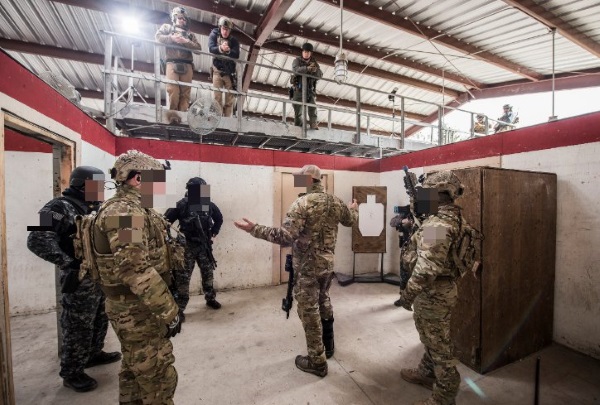
Not only do they watch, but in most cases will provide feedback on their performance at the end of each scenario.
As you might imagine, that feedback might not always be so pleasant.
In fact, should you screw up in even the slightest regard (say, you entered a room with the wrong foot forward), you could find yourself doing 100-yard wind sprints with an 80 lb. truck tire.
At the end of each day, the Green Team candidate is provided with feedback on his overall performance for that day.
Everything from his overall scores, to safety violations, to every lack of detail that the candidate might have demonstrated.
It’s in the CQB phase that most students wash out, which is likely why it’s the first phase of Green Team.
Related Article: 9 Ways To Check If Someone Was A Navy SEAL
Advanced Skydiving Training
In years past, all SEALs would attend the Army Airborne School in order to get jump-qualified right after BUD/S graduation.
Candidates now go on to receive static line and free-fall training at a facility much closer to home in San Diego, CA.
The jump training is standard stuff, and every SEAL has gone through it.
However, at DEVGRU, things are a bit different.
Instead of simple static line / freefall jumps, Green Team trainees spend the better part of their skydiving training doing High Altitude, Low Opening (HALO) jumps.
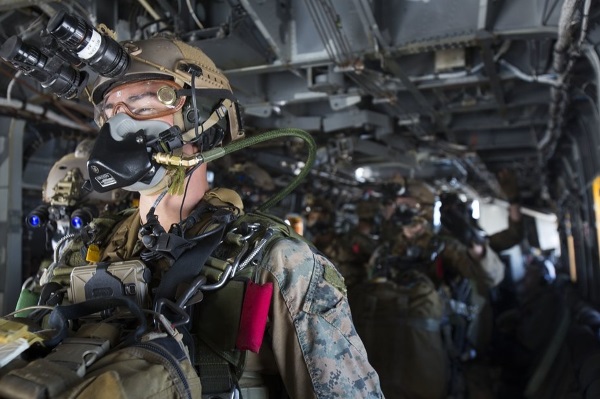
HALO is a military skydiving technique that involves jumping from a high altitude (usually 15,000 – 35,000 ft), and opening the chute at a low altitude (usually around 2,000 ft.). (References: 2, 3)
They also practice High Altitude High Opening (HAHO) techniques, which involve jumping at high altitudes, but also opening at relatively high altitudes.
Both scenarios typically require the use of supplemental oxygen.
Green Team candidates also practice flying their chutes in formation, known as a “stack.”
In this ‘stack’, the lead jumper (IE the first guy out the door) is in charge of navigating to the target, and the jumpers behind him follow him.
The jumpers are often several miles away from the target, allowing them to approach it silently.
Of course, much of this depends on numerous factors like winds aloft, barometric pressure, type of canopy used, load out (i.e. how much weight they’re carrying), and the altitude the parachute is deployed.
All of these techniques are performed both during the day and at night, with an emphasis on nighttime operations.
Needless to say, it isn’t easy…
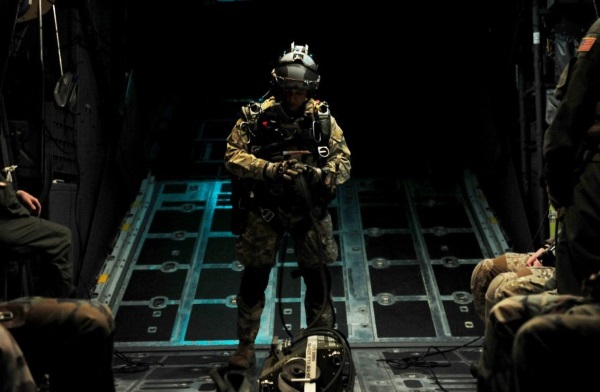
Survival, Evasion, Resistance, and Escape (SERE) Training
It’s unclear at what point Green Team candidates move on to SERE training, but it’s thought that it’s towards the end of DEVGRU selection.
SERE training essentially involves training candidates how to survive with limited resources (Survival), how to evade capture (Evasion), how to handle being captured by an enemy force (Resistance), and how to escape detention (Escape).
Since SEAL Team 6 operators are tasked with missions deep behind enemy lines, SERE training makes sense.
Related Article – Air Force SERE Specialist (1T0X1): Career Profile
If one or more of them were ever captured, they hold some of the most closely guarded and sensitive secrets.
With that said, no Navy SEAL has ever been taken prisoner, so it’s really more of a refresher to their previous SERE training. (Reference: 4)
Other DEVGRU Advanced Training Includes:
- Hand-to-hand combat
- Advanced Mountain climbing
- Defensive and Offensive driving
- Advanced diving techniques
- Advanced communications training
- Cold weather operations
- Ship assaults
4. DEVGRU Squadrons
After successfully completing Green Team training, the former candidate then becomes an official DEVGRU operator.
There are currently 6 known DEVGRU squadrons, each with its own designated color code.
They include:
- Red
- Gold
- Blue
- Silver
- Black
- Gray
As far as selection and assignment go, each squadron gets to essentially draft candidates who’ve successfully passed Green Team.
It’s reportedly very similar to the way the NFL draft works.
In every draft, the squadron that got the first pick the previous year would pick last, the squadron that got the 2nd pick the previous year would get the #1 pick, and so on.
According to some estimates, there are as many as 600 operators currently serving on DEVGRU.
They no doubt lose a certain number of shooters every year to retirement, so these new Green Team graduates fill the attrition void.
Assault Squadrons – Red, Gold, Blue, Silver
These squadrons do exactly what you would think…they assault targets.
Each squadron has its own logo, patch, and unique “personality,” and they are each divided up into 3 troops.
Each troop has around 16 members and is led by a senior commissioned officer, as well as a troop chief.
DEVGRU squadrons can usually be divided down into smaller teams of SEALs, including:
- 2 squads, 8 SEALS in each squad
- 4 elements, 4 SEALs in each element
Red Squadron
Red Squadron is an assault squadron, identified by its unique logo which has an image of a Native American Indian on it.
They commonly refer to themselves as “the tribe,” which makes sense considering their logo.
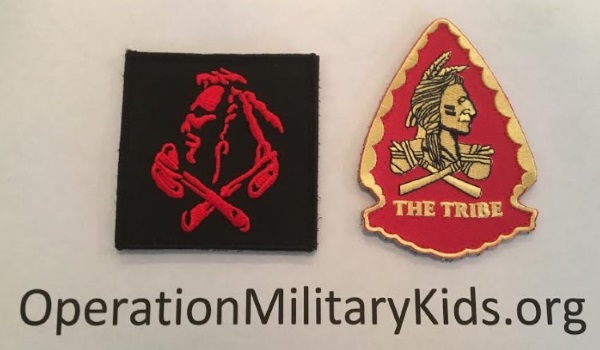
Several well-known SEALs have been members of Red squadron, including the man who claims to have shot Bin Laden, Rob O’Neill.
In fact, this squadron was confirmed by Military Times (Reference: 5) to be the only squadron involved in the raid on UBL’s compound.
Half of the members of Red Squadron (about 25 of them) were chosen for the mission because they were the only squadron in between alert status and deployment.
Gold Squadron
This is another assault squadron and is identified by its unique logo which has an image of what looks like a Knight / Dragon with a trident.
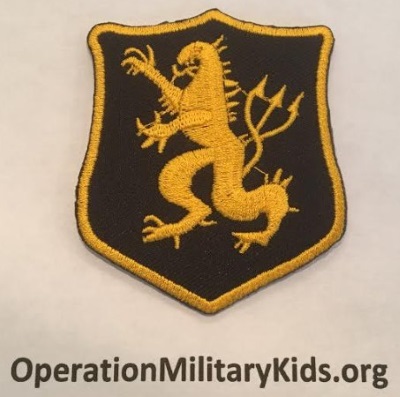
One notable member of Gold squadron was Ryan Owens, who was killed in a Yemeni raid on January 29, 2017. (Reference: 6)
President Donald Trump actually mentioned him specifically in his address to a joint session of Congress on Feb 28, 2017. (Reference: 7)
Unfortunately, Gold squadron was also apparently involved in the largest loss of the life DEVGRU has ever experienced, Extortion 17. (Reference: 8)
Other notable members (KIA) include:
- Jonas B. Kelsall
- Robert J. Reeves
- Stephen M. Mills
RIP.
Blue Squadron
Another assault squadron, Blue squadron was actually one of the original ones when SEAL Team 6 was founded.
The other one was Gold.
Their unique logo is identified by a pirate skull and crossbones, taken from the original Jolly Rogers pirate flag.
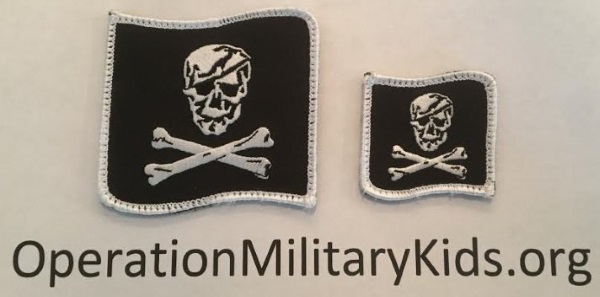
One notable member of Blue Squadron includes Britt Slabinkski, a Navy SEAL who was awarded the Congressional Medal of Honor by President Trump.
Slabinsky was actually a Command Master Chief for SEAL Team 2 from 2010 – 2012, before making his way over to DEVGRU. (Reference: 9)
Silver Squadron
Like the others, Silver squadron is also an assault squadron.
In the wake of 9/11, it was formed sometime around 2008 because of the rapid increase of DEVGRUS’ size.
Their logo is sort of a mashup of the logos from the other squadrons, with a pirate skull, sword, and 2 pickaxes crossed over one another.
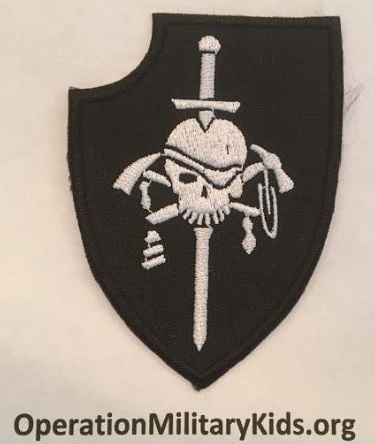
DEVGRU Silver Squadron has been involved in several controversial missions, including the mission to rescue Linda Norgrove.
Norgrove was kidnapped by insurgents in the eastern Kunar province of Afghanistan, and her release was being negotiated.
Ultimately, Navy SEALs from Silver Squadron were tasked with rescuing her.
During the attempted rescue, Norgrove was killed. (Reference: 10)
The original cause of death was thought to be at the hands of her captors, but a subsequent investigation revealed that she was actually killed by a grenade thrown by one of the SEALs.
Some notable members of Silver squadron include (all KIA):
- Kyle Milliken
- William Mulder
- Collin Thomas
DEVGRU Black Squadron
A somewhat more elusive and secretive sub-branch of DEVGRU is Black squadron.
This particular squadron is sort of the spying wing of SEAL Team 6, and they actually used to originally be the sniper unit for DEVGRU.
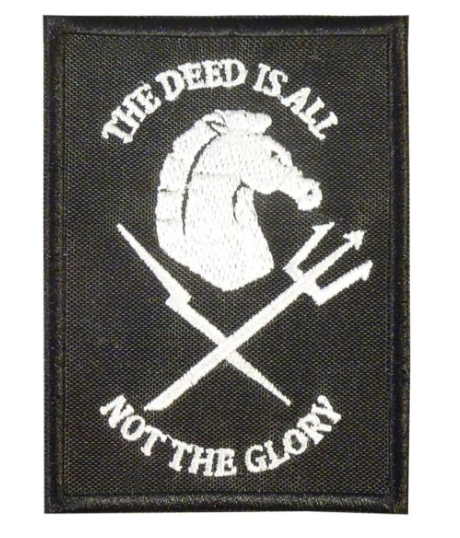
After 9/11, they were re-tasked with AFO and “Operation Preparation Of Battlespace” (OPB) in mind.
What this essentially means is they conduct advanced surveillance of targets in which the larger DEVGRU force may ultimately conduct operations on.
Some have speculated that a DEVGRU Black Squadron member(s) may have been involved in the stake-out of Bin Laden’s compound prior to the May 1st raid.
They also apparently have women in the squadron, although it’s important to note that none of them are actually SEALs.
The purpose of having women in the group is to help operators “blend in” in a more low-key way.
Their primary responsibilities are speculated to include:
- Intelligence gathering
- Sniper operations
- Reconnaissance
Black squadron is estimated to have over 100 members.
Gray Squadron
According to a NY Times article, Gray squadron is tasked with driving the custom water vehicles used by DEVGRU. (Reference: 11)
These include things like:
- High-performance speed boats (MK V SOC Craft)
- SEAL Delivery Vehicles (SDVs)
- Special Operations Craft-Riverine
Gray squadron’s logo is uniquely identified by a Viking with 2 hatchets,
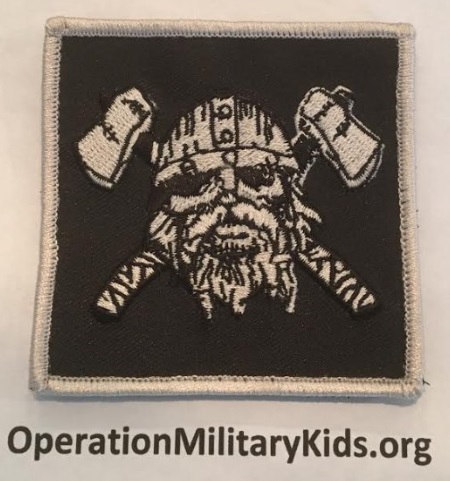
It can be inferred that their primary responsibilities are to get assault squadron operators to their target, on time, every time.
5. DEVGRU Weapons And Equipment
Special Note: Check out our more comprehensive guide to Navy SEAL weapons and gear here.
One thing that really separates SEAL Team 6 from the regular SEAL teams is their variety of weapons.
Unlike the regular SEAL teams, they employ a wide array of sophisticated and highly classified weapons.
They also have access to armories that will custom modify a particular weapon to the operator’s liking.
This includes things like modifying barrel lengths and hand grips, attaching custom scopes and optical devices, and even adding extending magazine round clips.
Another thing to note about DEVGRU is that they literally get to play with all of the US Navy’s latest and greatest toys, well before the “regular” SEAL Teams do.
Part of this mission is in their name: development group.
They are given these new weapons and gear to see how they hold up in combat scenarios.
For example, the 4-tube optic night vision goggles made popular by the movie “Zero Dark Thirty” were almost exclusively used by DEVGRU and Delta Force operators.
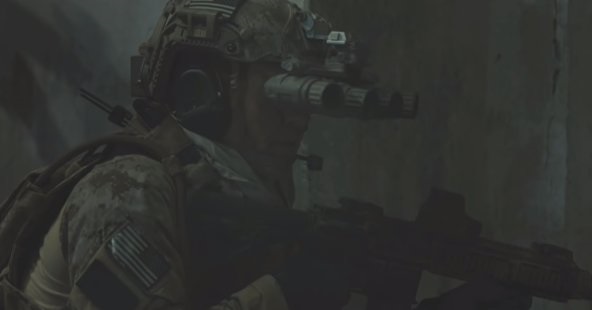
Now that they have proven themselves in combat, it’s likely that they are now used by the traditional SEAL Teams as well.
Here’s a quick look at some of the weapons DEVGRU uses:
6. Semi-Automatic / Automatic Weapons
- Colt M4A1: The primary assault rifle used by the Teams, capable of both semi-auto and full-auto fire.
- MK 18 Mod 2: Primary CQB
- MK 13
- MK 16
- MK 17
- M14 EBR
- M240
- MK46 Mod 0
- MK48 Mod 0
- M2
Pistols
- Glock 19
- Sig Sauer P226
- Sig Sauer P239
- HK45CT
Sniper Rifles
- .300 Win Mag
- MK-12 5.56
- MK-11
- SR-25 7.62
- .338 Lapua Mag
- M91A2
- M82
Night Vision Goggles
- EOTech GPNVG Ground Panoramic Night Vision Goggle
- Newcon Optik NVS-9 3rd Gen (2 eye tubes)
Breaching Gear / Tools
- Blackhawk Thunderbolt Entry Ram
- Halligan Bar
- C4
- C6 explosive breacher tape
- Simon Breach Grenade
- Benelli M4 Super 90
- Mossberg 590
- Remington 870
Clothing / Footwear
- Vasque Men’s Juxt Multi-Sport Shoe (the type of shoe worn on the Bin Laden raid)
- Blackhawk Desert Winter Boot
- Camouflage: Depending on the mission, SEALs from DEVGRU will wear a wide variety of patterns, including AOR-1 and 2, and Woodland.
7. Notable Missions
DEVGRU has carried out numerous missions since its inception.
Here are some of the more well-known missions, from most recent to oldest:
- Al Hathla Raid (May 23, 2017)
- Yakla Raid (January 29, 2017 – possibly Gold Squadron)
- Hostage Rescue, Yemen (November 26, 2014)
- Capture Mission against Al-Shabaab, Barawe (October 5, 2013 – Squadron unknown)
- Operation Octave Fusion, Somalia (January 24, 2012 – possibly Red Squadron)
- Rescue of Dr. Dilip Joseph (December 8, 2012 – squadron unknown)
- Operation Neptune Spear (May 2, 2011)
- Maersk Alabama Hijacking, Off the coast of Somalia (April 12, 2009 – possibly Red Squadron)
References
- https://simunition.com/en/products/fx_marking_cartridges
- https://en.specwar.info/TTT_and_S/halo_high_altitude_low_opening.php
- https://en.wikipedia.org/wiki/High-altitude_military_parachuting
- https://www.seallegacy.org/about
- https://www.militarytimes.com/2013/03/29/seals-in-bin-laden-raid-drawn-from-red-squadron/
- https://en.wikipedia.org/wiki/William_Owens_(Navy_SEAL)
- https://en.wikipedia.org/wiki/Donald_Trump_speech_to_joint_session_of_Congress,_February_2017
- https://www.airspacemag.com/military-aviation/final-flight-extortion-17-180953947/
- https://en.wikipedia.org/wiki/Britt_K._Slabinski
- https://en.wikipedia.org/wiki/Death_of_Linda_Norgrove
- https://www.nytimes.com/interactive/2015/05/27/world/inside-seal-team-six.html
- Replacing Dog Tags: 6 Things You Need to Know - June 28, 2024
- Navy OAR Test Study Guide - June 24, 2024
- 10 Best Sniper Movies of all Time - June 20, 2024
Originally posted on February 12, 2019 @ 3:57 am
Affiliate Disclosure: This post may contain affiliate links. If you click and purchase, I may receive a small commission at no extra cost to you. I only recommend products I have personally vetted. Learn more.

A very small amount of DEVGRU operators also come from the Navy Explosive Ordinance Disposal teams or EODs. I learned this by reading Mark Owens first novel No Easy Day.